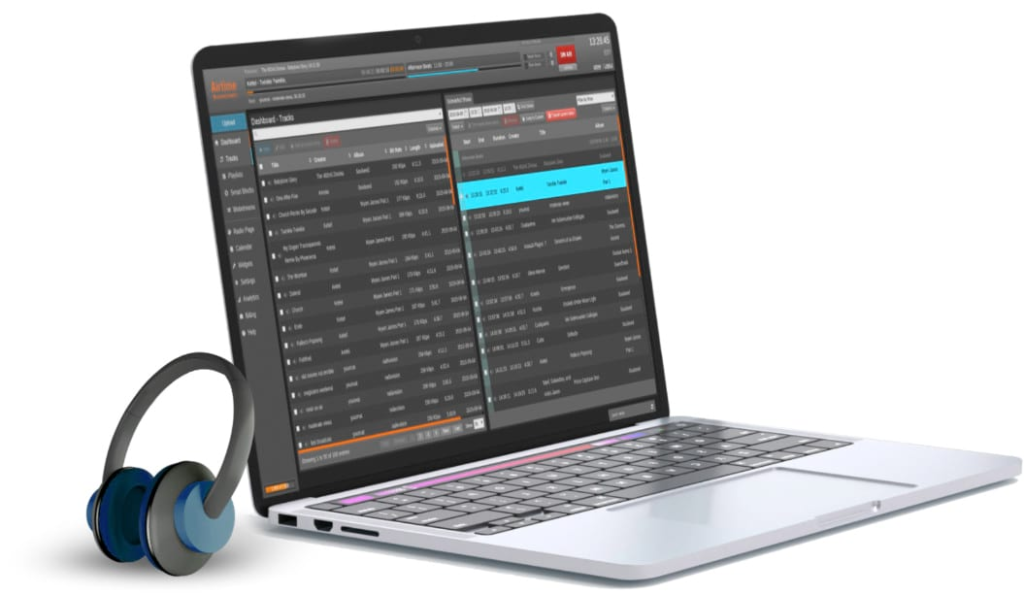Radio Streaming Software: Revolutionizing the Way We Broadcast
In the digital age, radio streaming software has become an essential tool for broadcasters, podcasters, and content creators. Whether you’re running an online radio station, hosting a live show, or streaming music, the right software can make all the difference. This article explores the key features of radio streaming software and how it is transforming the broadcasting industry.
Other way Download Link

What is Radio Streaming Software?
Radio streaming software is a specialized tool that allows users to broadcast audio content over the internet. It enables real-time streaming of music, talk shows, podcasts, and other audio formats to a global audience. This software is used by both amateur and professional broadcasters to reach listeners on various platforms, including websites, mobile apps, and social media.
Key Features of Radio Streaming Software
1. User-Friendly Interface
- Ease of Use: Most radio streaming software comes with an intuitive interface that makes it easy for users to set up and manage their broadcasts. This is particularly important for beginners who may not have technical expertise.
- Customizable Layouts: Advanced software allows users to customize the layout to suit their preferences, making it easier to access frequently used features.
2. High-Quality Audio Streaming
- Bitrate Control: High-quality audio is crucial for any broadcast. Radiostreaming software often includes bitrate control, allowing broadcasters to adjust the quality of their stream based on their audience’s internet connection.
- Codec Support: Support for various audio codecs (e.g., MP3, AAC) ensures compatibility with different devices and platforms, providing a seamless listening experience.
3. Live Broadcasting Capabilities
- Real-Time Streaming: Live broadcasting is a core feature of radio’s streaming software. It allows broadcasters to stream content in real-time, engaging with their audience as the event unfolds.
- Scheduling: Some software includes scheduling features, enabling broadcasters to plan and automate their live shows, ensuring consistent content delivery.
4. Playlist Management
- Automated Playlists: Radio Free streaming software Download often includes tools for creating and managing playlists. Automated playlists can be scheduled to play at specific times, reducing the need for manual intervention.
- Music Libraries: Integrated music libraries allow broadcasters to easily access and organize their audio files, making it simple to queue up songs or segments.
5. Listener Interaction
- Chat Integration: Many radio stream platforms include chat features that allow listeners to interact with the broadcaster in real-time. This can enhance engagement and build a sense of community.
- Request Lines: Some software supports request lines, enabling listeners to request songs or topics, adding a personalized touch to the broadcast.
6. Analytics and Reporting
- Listener Statistics: Understanding your audience is key to growing your station. Radio streaming software often includes analytics tools that provide insights into listener demographics, peak listening times, and more.
- Performance Metrics: Detailed reports on stream performance, including uptime, bitrate, and listener count, help broadcasters optimize their content and delivery.
7. Monetization Options
- Ad Insertion: Some radio streaming software supports ad insertion, allowing broadcasters to monetize their streams by playing advertisements at scheduled intervals.
- Subscription Models: Advanced platforms may offer subscription-based models, enabling broadcasters to offer premium content to paying subscribers.
8. Cross-Platform Compatibility
- Multi-Device Support: Radio streaming software is often compatible with various devices, including desktops, laptops, smartphones, and tablets. This ensures that broadcasters can manage their streams from anywhere.
- Platform Integration: Integration with popular platforms like YouTube, Facebook, and Twitch allows broadcasters to reach a wider audience and stream content across multiple channels.
The Future of Radio Streaming Software
As technology continues to evolve, so too will radio streaming software. Future developments may include:
- AI-Driven Content Curation: Artificial intelligence could be used to analyze listener preferences and automatically curate playlists, enhancing the listening experience.
- Enhanced Mobile Capabilities: With the increasing use of mobile devices, future software may offer more robust mobile features, allowing broadcasters to manage their streams on the go.
- Virtual Reality Integration: As VR technology becomes more mainstream, radio streaming software could incorporate VR elements, offering immersive listening experiences.
Conclusion
Radio streaming software has revolutionized the way we broadcast and consume audio content. With its user-friendly interfaces, high-quality audio streaming, and advanced features like live broadcasting and analytics, it has become an indispensable tool for modern broadcasters. As technology continues to advance, the possibilities for radio streaming software are endless, promising even more innovative ways to connect with audiences around the world.
Other way Download Link

